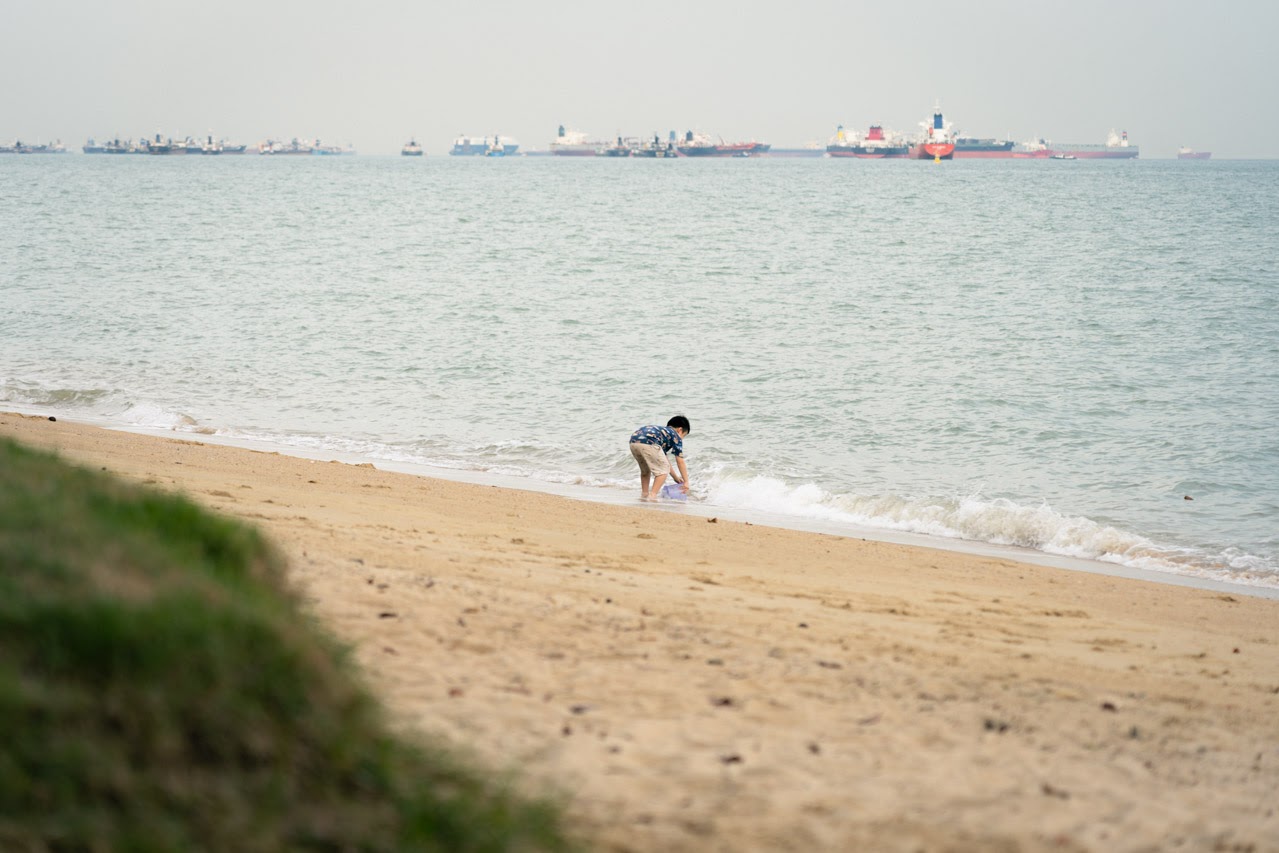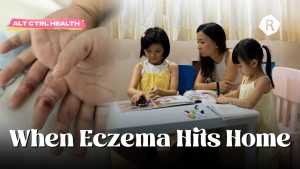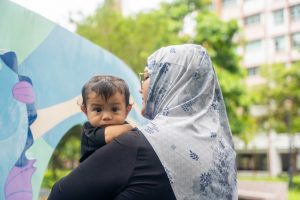Dr Hana Alhadad is a researcher and advisor at EveryChild.sg. With a background in community development and psychology, she champions the well-being of neurodivergent children, single mothers, victim-survivors of family violence, and children & youth across Singapore.
In this contributed op-ed for RICE, she shares her take on the Megan Khung case and calls for stronger collective action to protect vulnerable children in Singapore.
Top image: Stephanie Lee / RICE file photo
The sentencing of Megan Khung’s mother and her partner has left Singapore confronting a brutal truth—one marked by grief, outrage, and a sense of collective failure.
Megan was just four years old. She endured prolonged abuse that ultimately led to her tragic death—a fate that should have never happened. It goes without saying that her case underscores the urgent need to re-evaluate and strengthen our child protection systems.
I say this because Megan’s story is not an isolated tragedy. Over the past decade, at least seven children in Singapore have died from abuse.
These cases often follow a similar trajectory. Someone notices—sometimes a teacher, a neighbour, a relative—raises a concern, and hopes the system will intervene. But due to fragmented responses, unclear thresholds for risk, or limited legal avenues, the danger persists. The danger deepens.
In Megan’s case, it was all of them. They noticed, and they tried. Yet their efforts were not enough. Not because they didn’t care, but because the scaffolding needed to act quickly and decisively simply wasn’t there.
When Caring Isn’t Enough
What makes this case even more devastating is that Megan was not invisible.
Her preschool educators noticed the signs of abuse and acted. A trusted social service agency followed up. Her grandmother filed a police report. Individuals did what they could within their roles. Reports were made, but the severity of risk was not adequately communicated or understood.
Megan was removed from school, isolated from protective adults, and ultimately left beyond reach.
This was not a failure of concern. It was a failure of coordinated, systemic action. And it is a failure we must not allow to happen again.
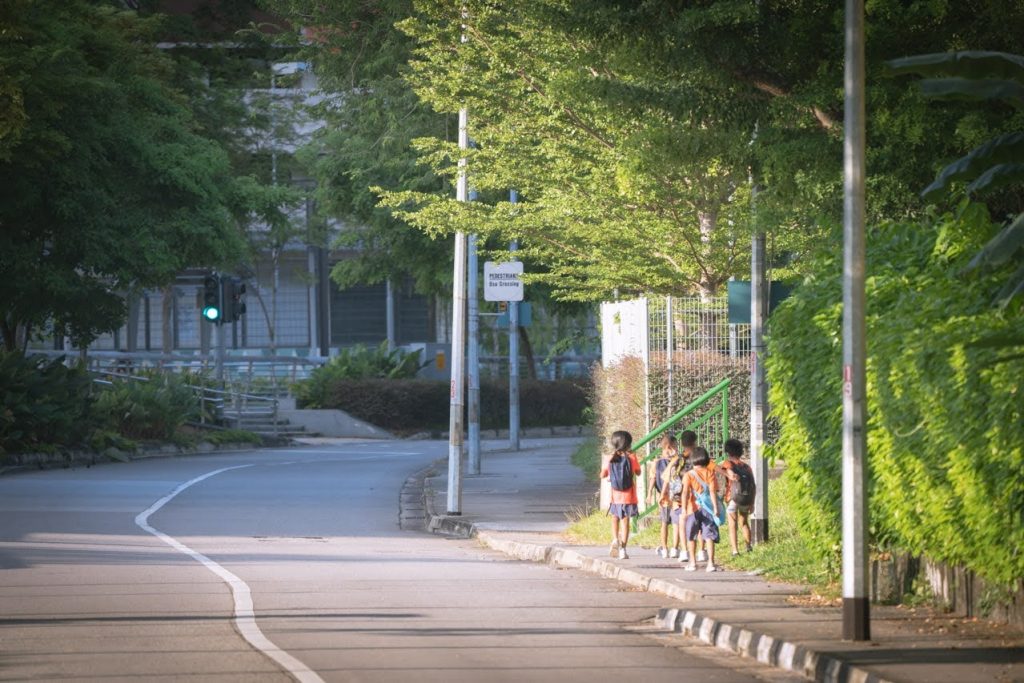
In the wake of Megan’s death, respected voices within the social service sector have spoken with painful clarity and moral urgency. Among them is Cindy Tay, the Director of Home at Children’s Aid Society and a highly-regarded, long-standing practitioner in the field. She reminds us that while systemic reform is necessary, we must never lose sight of where accountability ultimately lies: with the perpetrators of abuse.
She also points to a deeper crisis: the breakdown of coordinated responsibility, the missed opportunities to intervene, and the structural ambivalence that allows red flags or urgent concerns to be noted, but not decisively acted upon.
Cindy raised urgent questions: Did agencies receiving reports treat them with the gravity they deserved? Did regulatory bodies respond adequately, and were police action and follow-up sufficiently coordinated? When concerns were raised, was there anyone truly accountable for seeing them through? Were frontline workers supported with clear, expert guidance?
Nonetheless, her call is clear. Professionals with child protection expertise must be made available to support families, teachers, and even case workers from the very first report of possible harm to a child. These professionals are trained to respond with urgency, not hesitation, and must be given the mandate to act decisively before harm escalates.
Another experienced social service practitioner, Lim Jingzhou, voiced deep discomfort with how the tragedy has been publicly framed—particularly the rush to assign blame to a single agency or individual.
He warned that this instinct to scapegoat not only distorts the truth but also distracts us from the deeper, systemic failures that left Megan unprotected. When frontline workers or single agencies become the focus of blame, we lose sight of the fractured ecosystem around them—the ecosystem that failed to act, to connect, to lead.
Lim called for solidarity with those on the ground who acted out of care, even when the structures around them faltered.
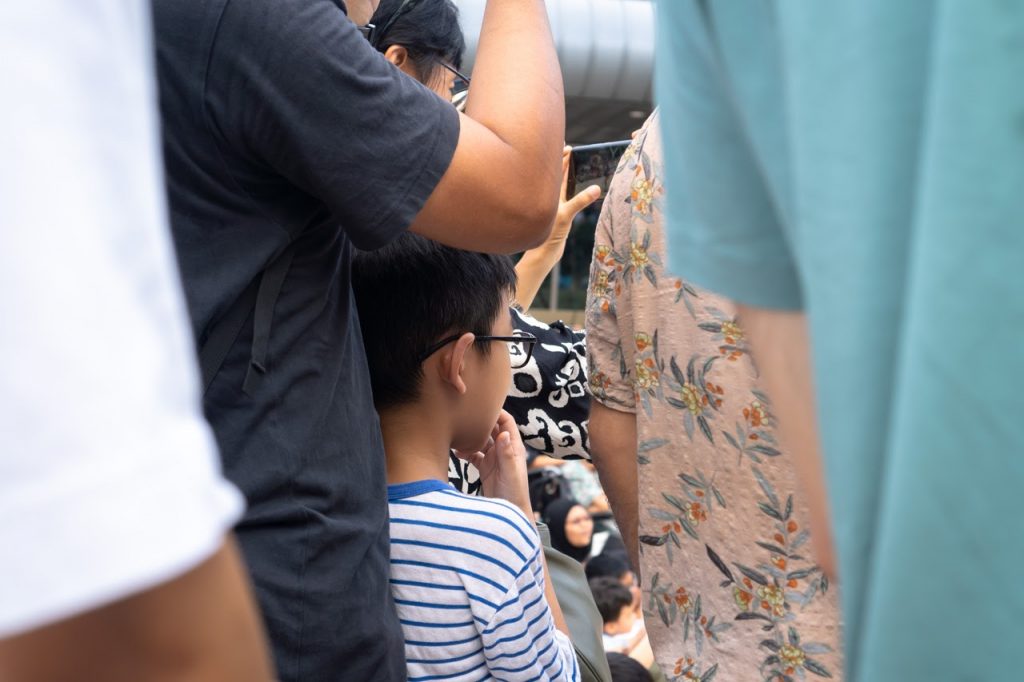
These reflections echo the Singapore Children’s Society, which has called Megan’s death a “collective failure” of the system.
They recommend that all preschool educators receive mandatory, ongoing child protection training, and every preschool should appoint a child safety officer—someone with both the training and authority to escalate concerns effectively.
The Need to Do More
Recent news reports confirm that the government is indeed planning a further review into Megan’s case, extending beyond the initial findings. This broader investigation is set to examine the responses of all agencies involved, not just one.
It comes after significant public outcry and sustained calls from many in the social service sector who, like us, believe that meaningful accountability must go beyond one organisation. Accountability should be applied across the entire system.
Importantly, like many other organisations working with children, we call for this review to be independent, thorough, and transparent. A full and honest accounting of what went wrong must inform what comes next. Not to assign blame for blame’s sake, but to ensure that no future child is failed in the same way.
Cases like Megan’s don’t just reveal gaps in detection and response. They also cast a long shadow, eroding public trust and leaving frontline professionals shaken and discouraged.
This growing uncertainty and grief must be addressed head-on. When a child is failed so completely, it not only raises questions about what went wrong, but it also raises doubts about whether anything will truly change.
What’s needed now is not only better response mechanisms but a recommitment to making child safeguarding, well-being, and holistic development a national priority.

This calls for more than a one-off inquiry or reactive policy tweak. Real change means sustained, structural reform: stable funding for a stronger, more coordinated child protection system; better training and support for those on the frontlines—educators, social workers, caregivers; and investment in prevention, not just crisis response.
It also means finally addressing long-neglected gaps, from early screening to primary education—especially after the age of seven—where too many children still fall through the cracks.
Training alone won’t be enough without a clear system of support and escalation when red flags appear. We need a central child safeguarding body—independent, trusted, and well-resourced—that can cut across silos, offer trauma-informed assessments, and support frontline workers across sectors.
We need laws that place a child’s safety above parental rights when the two conflict. Protective caregivers must be empowered to act early, and agencies must be held accountable when they fail to escalate.
This urgency must extend to police protocols. Reports from caregivers or relatives should trigger immediate, trauma-informed responses. The threshold for intervention must be clear, because a missed report or delayed follow-up can mean the difference between protection and tragedy.
Child protection is complex, human work. It demands real-time coordination, not a passive wait-and-see approach. And it must be empowered to act—quickly—before a child slips out of sight and into danger.
We are not alone in this call. Countries like the United States, Australia, and Hong Kong have already established mechanisms to ensure child deaths are not just grieved, but thoroughly investigated, so lessons are learned.
Singapore needs the same. Systems must evolve. Safeguards must strengthen. No failure should ever be repeated in silence.
These are not upgrades. They are the bare minimum for any society that claims to put children first.
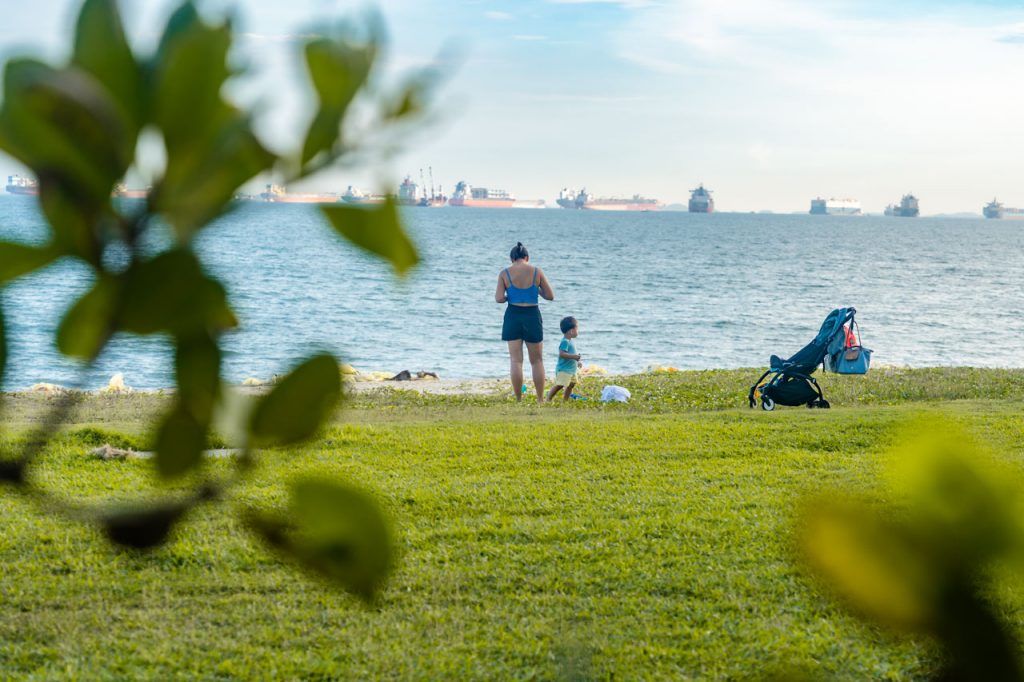
Stretched Thin
One of the most troubling aspects of the public discourse following Megan’s death is the implied deflection of responsibility onto (partially funded) social service agencies and non-profits. The discourse misses the fact that these bodies are already stretched to their limits trying to plug gaps in services for the most vulnerable.
These organisations do critical work, often under immense pressure and with limited resources. Critically, they do not have the full authority to act decisively in high-risk cases. And yet, when things go wrong, they’re still expected to carry the blame.
It is also, unfortunately, inaccurate to assume that simply raising the alarm will prompt a swift response from government services. Those working on the ground know this is not the case.
Government-linked services are just as overburdened, often operating at the brink of crisis management, rather than being able to invest meaningfully in upstream, preventive support.
Upstream work refers to the systems, support networks, and interventions that prevent harm before it begins—work that builds the foundations for safety, healing, and lifelong wellbeing. It includes early childhood development services, family strengthening programmes, accessible mental health support, early intervention for learning or behavioural difficulties, and strong, consistent caregiver support.
Too often, our systems are structured around crisis—responding to harm rather than preventing it. Preventive services are fragmented, under-capacitated, and treated as secondary when they should be central.
If we want fewer children to fall through the cracks, we need to build bridges earlier, not just stronger safety nets below.
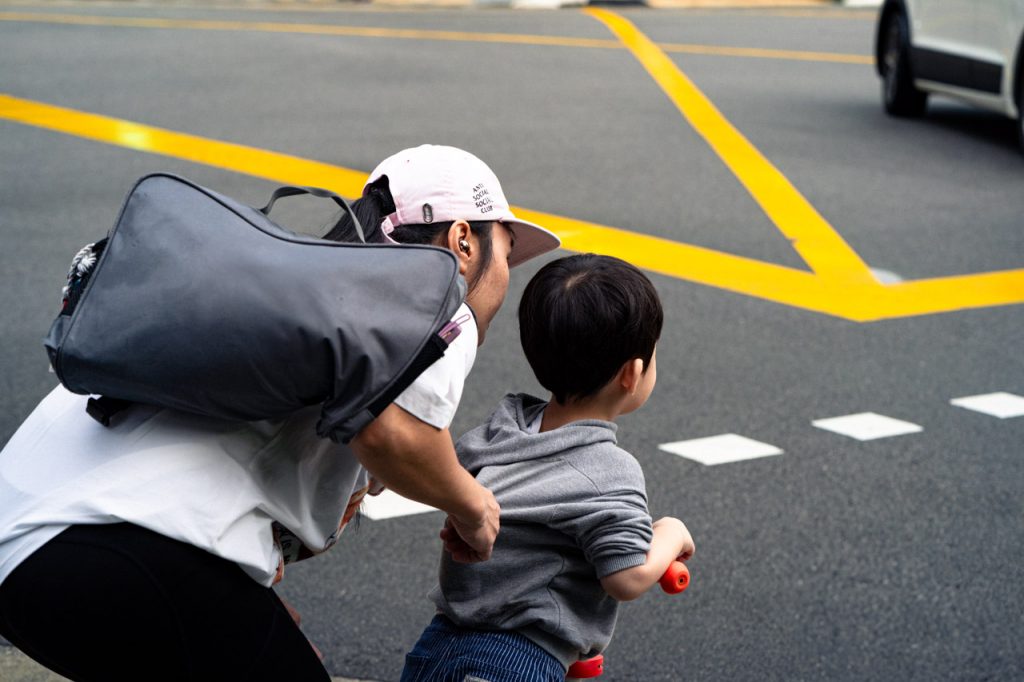
A Culture of Upstanders
This is also a call for a cultural shift. Too often, abuse is treated as a family matter—kept behind closed doors, spoken of in hushed tones.
But child protection is not a family issue. It is a collective moral duty. We need a society that pays attention, that listens, and that chooses not to look away. Because silence, too, is a response.
That means cultivating a culture of upstanders, not bystanders. People who notice when something feels off, who ask difficult questions, who stay engaged even when it’s uncomfortable or inconvenient. Sometimes, protection begins with a question no one else dares to ask.
This responsibility cannot fall solely on professionals. It must extend to all of us—neighbours, relatives, educators, caregivers. We need to give people the tools, knowledge, and confidence to act.
That includes knowing what signs to look for, who to call, and how to persist when the first door doesn’t open. And just as importantly, we need systems that stand behind those who do speak up.
Being an upstander takes courage. Every time someone stepped forward for Megan, it meant something. It wasn’t enough this time—but it mattered.
Our task now is to make sure that the next time someone raises the alarm, it leads to protection, not loss. Protecting children shouldn’t be seen as exceptional. It should be what we expect of ourselves, and of the systems we’ve built to keep them safe.
A Collective Responsibility For Our Children

Megan’s death was not just a heartbreaking loss; it was a systemic failure. It revealed where safeguards faltered, processes stalled, and institutions failed to respond in time. It holds up a mirror to our collective hesitation, assumptions, and underestimations of what was needed.
Yet this tragedy can also be a catalyst for change—a moment to stop patching cracks and start rebuilding from the foundation.
Singapore must take the next step: establishing an independent panel, empowered by law, to examine child deaths due to abuse.
This body should have the authority to access cross-agency records, conduct thorough investigations, and issue public findings with actionable recommendations. Crucially, it must operate impartially, free from conflicts of interest and independent of the institutions involved.
Honouring Megan’s memory requires more than mourning—it demands transformation. We must strengthen systems, but also deepen our shared responsibility to protect every child. This means moving beyond fear, blame, and silence.
Child safety cannot be fragmented—one agency, one case, one reaction at a time. It must be embedded in how we operate—across schools, communities, laws, leadership, and funding.
Let us commit, as individuals, organisations, and as a society, to relentless safeguarding. Let us create structures that see, hear, and believe children. Let us ensure that help is not only available, but trusted and accessible. And let us make child safety not just a service, but a national ethos.
Let this be a call not just to mourn, but to act. To protect every child, long before it’s too late.
Megan deserved that. Every child does.
